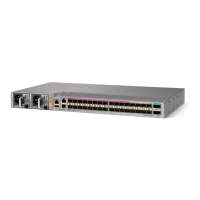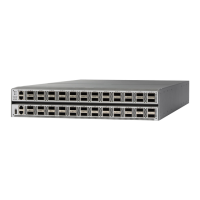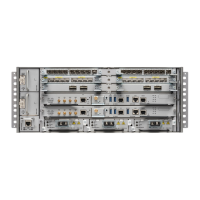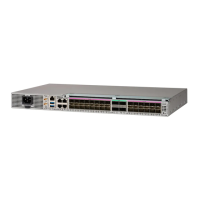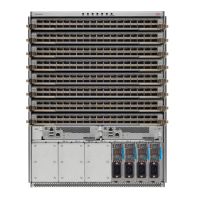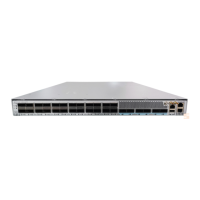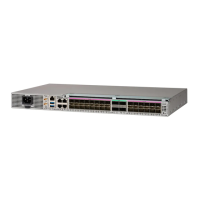Because the Routing Information Base (RIB) treats each of the IS-IS instances as equal routing clients, you
must be careful when redistributing routes between IS-IS instances. The RIB does not know to prefer Level
1 routes over Level 2 routes. For this reason, if you are running Level 1 and Level 2 instances, you must
enforce the preference by configuring different administrative distances for the two instances.
Multiprotocol Label Switching Traffic Engineering
The MPLS TE feature enables an MPLS backbone to replicate and expand the traffic engineering capabilities
of Layer 2 ATM and Frame Relay networks. MPLS is an integration of Layer 2 and Layer 3 technologies.
For IS-IS, MPLS TE automatically establishes and maintains MPLS TE label-switched paths across the
backbone by using Resource Reservation Protocol (RSVP). The route that a label-switched path uses is
determined by the label-switched paths resource requirements and network resources, such as bandwidth.
Available resources are flooded by using special IS-IS TLV extensions in the IS-IS. The label-switched paths
are explicit routes and are referred to as traffic engineering (TE) tunnels.
Overload Bit on Router
The overload bit is a special bit of state information that is included in an LSP of the router. If the bit is set
on the router, it notifies routers in the area that the router is not available for transit traffic. This capability is
useful in four situations:
1. During a serious but nonfatal error, such as limited memory.
2. During the startup and restart of the process. The overload bit can be set until the routing protocol has
converged. However, it is not employed during a normal NSF restart or failover because doing so causes
a routing flap.
3. During a trial deployment of a new router. The overload bit can be set until deployment is verified, then
cleared.
4. During the shutdown of a router. The overload bit can be set to remove the router from the topology before
the router is removed from service.
Overload Bit Configuration During Multitopology Operation
Because the overload bit applies to forwarding for a single topology, it may be configured and cleared
independently for IPv4 and IPv6 during multitopology operation. For this reason, the overload is set from the
router address family configuration mode. If the IPv4 overload bit is set, all routers in the area do not use the
router for IPv4 transit traffic. However, they can still use the router for IPv6 transit traffic.
IS-IS Overload Bit Avoidance
The IS-IS overload bit avoidance feature allows network administrators to prevent label switched paths (LSPs)
from being disabled when a router in that path has its Intermediate System-to-Intermediate System (IS-IS)
overload bit set.
When the IS-IS overload bit avoidance feature is activated, all nodes with the overload bit set, including head
nodes, mid nodes, and tail nodes, are ignored, which means that they are still available for use with label
switched paths (LSPs).
Routing Configuration Guide for Cisco NCS 6000 Series Routers, IOS XR Release 6.4.x
208
Implementing IS-IS
Multiprotocol Label Switching Traffic Engineering
